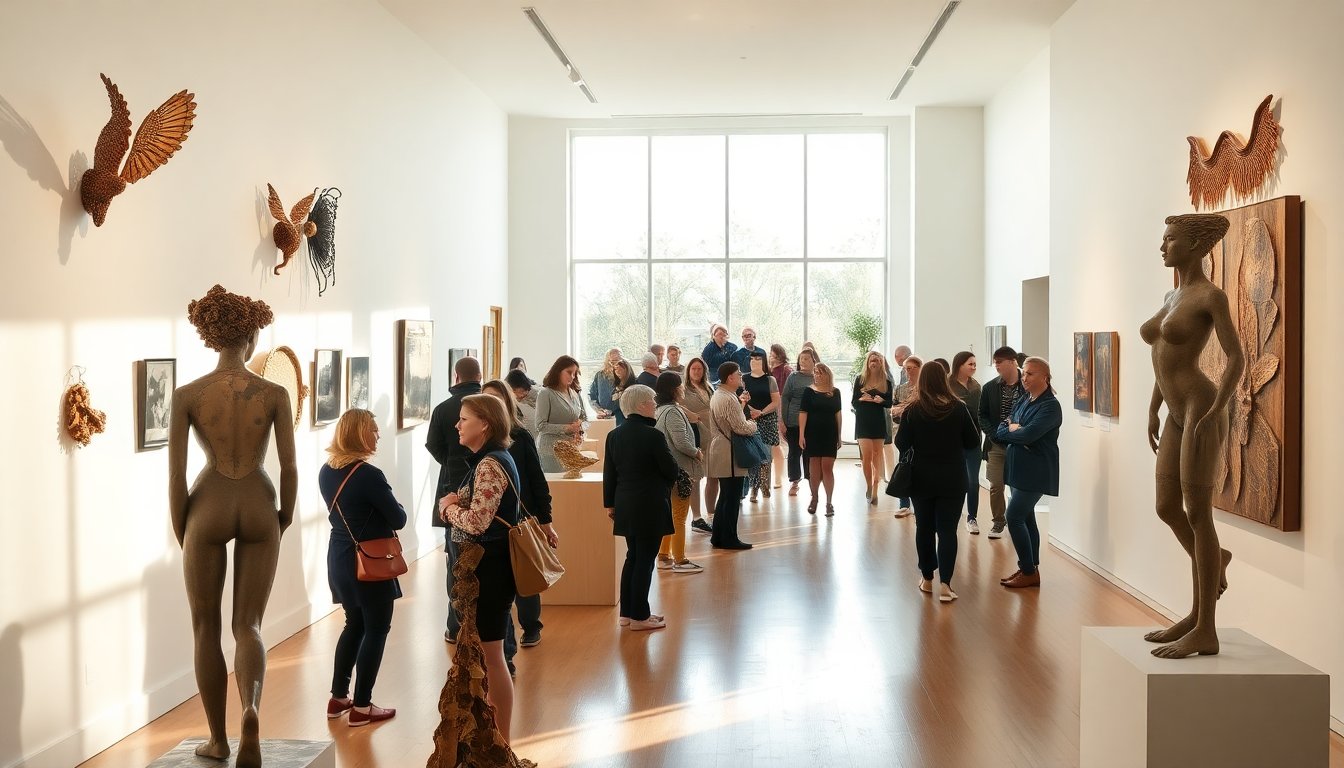Table of Contents
Marking an impressive milestone, the exhibition Anonymous Was a Woman at the Kreeger Museum highlights the works of four remarkable artists from the D.C. area. This show commemorates the 25-year legacy of a grant initiative aimed at supporting female artists over the age of 40, initiated by photographer Susan Unterberg in response to the cultural challenges of the 1990s.
Founded amid significant controversies surrounding the funding of performance art, the program has awarded substantial grants to women artists, providing them with the financial resources to flourish creatively. The current exhibition not only showcases individual talents but also reflects broader themes of feminism and artistic expression.
Historical context and the founding of Anonymous Was a Woman
The 1990s culture wars ignited fierce debates over the funding of provocative art, leading to the National Endowment for the Arts (NEA) withdrawing support from several controversial performances. Artists like Karen Finley and Robert Mapplethorpe faced significant backlash, resulting in a climate where individual grants were eliminated in 1994. In 1996, Susan Unterberg established the Anonymous Was a Woman grant program using her inheritance to empower women artists who were often overlooked in the art community.
Taking its name from a famous line in Virginia Woolf’s essay A Room of One’s Own, the program has since distributed nearly $7 million to over 300 artists. The Kreeger Museum provides a platform for four grant recipients, showcasing their diverse artistic practices and contributions to contemporary art.
A closer look at the featured artists
Curated by Vesela Sretenović, the exhibition features the works of Jae Ko, Linn Meyers, Joyce J. Scott, and Renée Stout. Each artist offers a unique perspective, utilizing various mediums to engage with personal and societal themes.
Jae Ko’s sculptural explorations
Jae Ko is a Korean American artist known for her intricate sculptures created from commercial paper, which she immerses in sumi and calligraphic ink. Her work, such as the Rhombus series, challenges the boundaries between two-dimensional and three-dimensional art, as the pieces resemble flowing fabric or geological formations. Ko’s practice invites viewers to consider the relationship between nature and art, emphasizing the transformative power of materials.
Linn Meyers’ abstract reflections
Another artist featured in the exhibition is Linn Meyers, who engages in abstract drawing practices that reflect her physical presence in the creative process. Her piece Law of the Meander incorporates delicate lines of acrylic ink, creating a visual representation of both cosmic scales and intimate details. Meyers’ work serves as a meditation on the interconnectedness of existence, highlighting imperfections as essential components of beauty.
Joyce J. Scott and Renée Stout: voices of social commentary
Joyce J. Scott’s creations merge traditional craft techniques with contemporary themes, as seen in her beaded sculptures that often address sociopolitical issues. In the exhibition, Scott presents Palestine/Israel, a striking piece that combines the Palestinian flag with symbols of conflict, offering a powerful commentary on identity and resilience.
Meanwhile, Renée Stout draws from African diasporic traditions, exploring hoodoo and feminist interpretations of the occult. Her work, including the stunning The Guardian, reimagines historical artifacts by incorporating modern materials such as rhinestones and cubic zirconia, creating a dialogue between past and present. Stout’s pieces challenge viewers to reflect on cultural heritage and the significance of marginalized narratives.
The enduring legacy of women artists
The Anonymous Was a Woman exhibition at the Kreeger Museum showcases the talents of these four artists and serves as a reminder of the ongoing struggle for recognition and support within the art world. By providing a platform for women artists over 40, the grant program continues to foster creativity and encourage diverse voices in a historically male-dominated field.
Founded amid significant controversies surrounding the funding of performance art, the program has awarded substantial grants to women artists, providing them with the financial resources to flourish creatively. The current exhibition not only showcases individual talents but also reflects broader themes of feminism and artistic expression.0


